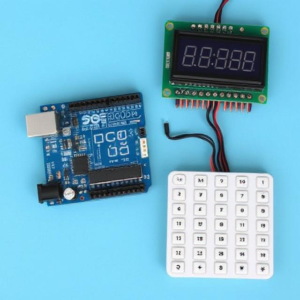1. RTC Module (Real-Time Clock)
- What it does: Keeps track of the current date and time, even when the device is powered off.
- Why it’s useful: Some projects need to know the exact time (e.g., when data was recorded). The RTC module ensures you have an accurate clock that doesn’t reset every time you turn off the device.
- Example: If you’re making a project that logs temperature over time, you’d use an RTC to know what time each temperature reading was taken.

2. SD Card Module (Storage)
- What it does: Allows you to read and write data to an SD card, just like how your computer saves files.
- Why it’s useful: It helps store large amounts of data (like logs, pictures, or files) that your project might need. It’s a way to save information when the device’s memory is full.
- Example: If you have a temperature sensor and you want to log data over time, you can use the SD card module to store the readings on an SD card for later access.
3. LCD Shield/Keypad Shield (Input/Output)
- What it does: Combines a screen (LCD) for displaying information and a keypad for user input (buttons to press).
- Why it’s useful: It lets users interact with the project (e.g., change settings or view information) through the screen and buttons, all in one convenient piece of hardware.
- Example: For a project like a simple calculator or a device where you need to enter numbers, this module makes it easy to both show information and accept input from the user.
4. GPS Module (e.g., NEO-6M)
- What it does: Gives your project access to global positioning system (GPS) data. It can find your location based on satellites.
- Why it’s useful: It helps your project know where it is in the world. This can be used for things like navigation, tracking, or adding location to data.
- Example: In a GPS-based tracker, the GPS module can help you find the exact location of an object in real-time.
5. Camera Module (e.g., OV7670)
- What it does: Captures images or video, similar to how a smartphone camera works.
- Why it’s useful: It allows your project to “see” and capture visual information. This can be useful for surveillance, object detection, or simply taking pictures.
- Example: If you’re making a home security system, the camera module can capture images of any movement or event to store or display.
In summary, these modules work together to make your project smarter and more capable, whether it’s tracking time, storing data, interacting with users, locating positions, or capturing images.








